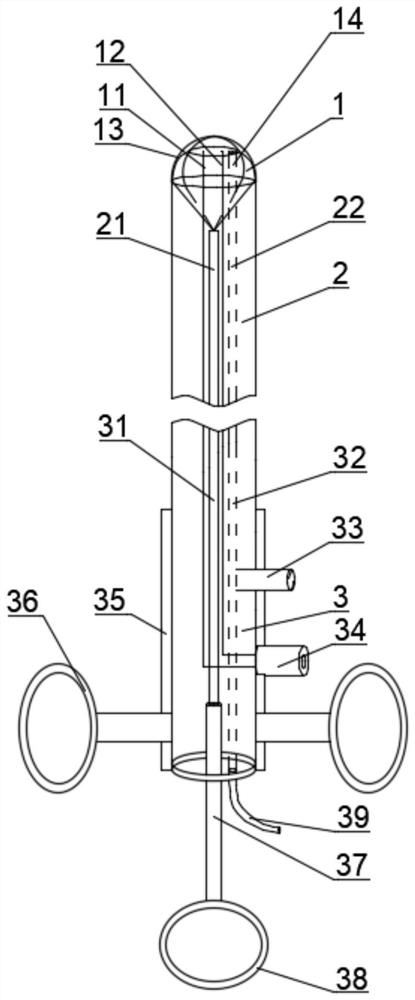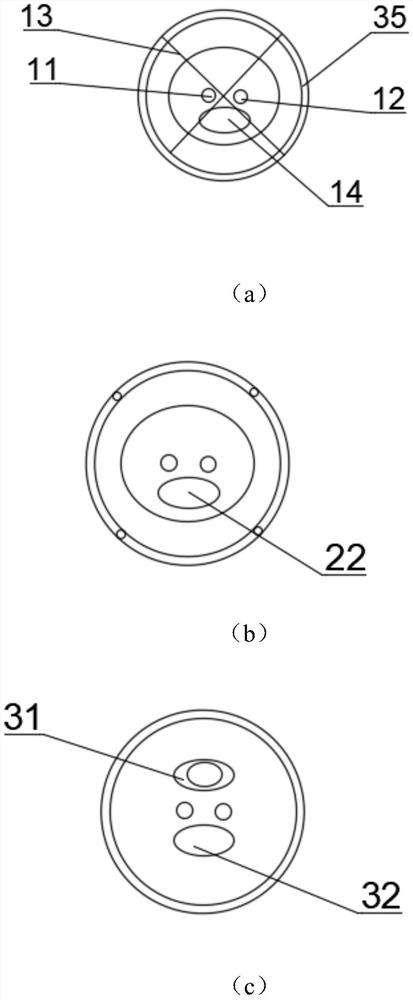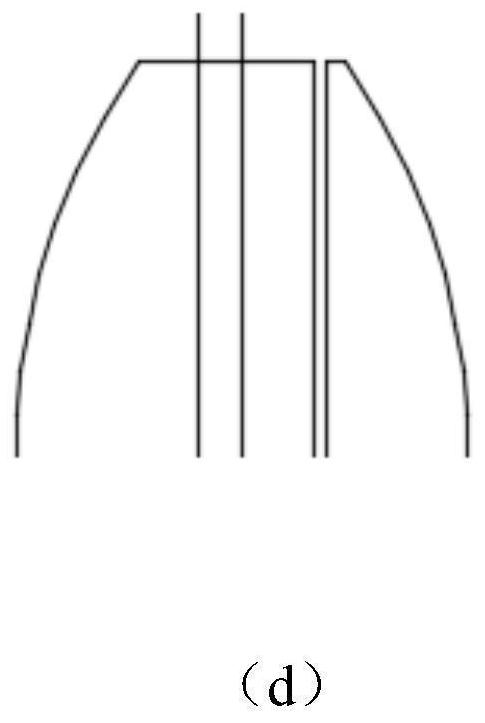Lithotripsy basket catheter
A net basket and catheter technology, which is applied in medical science, heating surgical instruments, surgery, etc., can solve problems such as difficulty in taking huge common bile duct stones, narrow space, liver abscess, etc., and achieve the effect of easy taking of stones and avoiding deformation
- Summary
- Abstract
- Description
- Claims
- Application Information
AI Technical Summary
Problems solved by technology
Method used
Image
Examples
Embodiment 1
[0051] In this embodiment, the total length of the catheter is 40-60 cm.
[0052] PTCD drainage of bile was performed first to control biliary infection and jaundice, and the PTCD tube was left in place for 2 months.
[0053] A zebra guide wire was inserted through the original PTCD tube, and the guide wire crossed the stone and entered the distal end of the duodenum through the duodenal papilla.
[0054] Indwell the guide wire and exit the original PTCD tube, if Figure 4 As shown in (a), (b) and (c), a guide wire is inserted through the tip of the gravel basket catheter, guided by the guide wire, the gravel basket catheter is sent into the common bile duct, the guide wire is withdrawn, and the mesh is released. Basket and set to remove choledocholithiasis.
[0055] Tighten the basket and immobilize the common bile duct stones, quickly instill normal saline through the contrast agent injection joint, perform plasma, microelectrode or laser lithotripsy, continuously tighten ...
Embodiment 2
[0057] In this embodiment, the total length of the catheter is 2.2-2.8 m.
[0058] A duodenoscope was inserted through the mouth, and after successful bile duct intubation, endoscopic retrograde cholangiography was performed first to determine the number, location and size of stones, and then a small incision of the duodenal papillary sphincter was performed, and a 1.0cm-diameter A cylindrical balloon dilates the duodenal papilla.
[0059] like Figure 5 As shown in (a), (b) and (c), under the guidance of the guide wire, insert the gravel basket catheter through the duodenal forceps, release the basket and pull the small common bile duct stones directly into the duodenum. When the diameter of the stone exceeds 1cm, release the basket catheter to take the stone. When the basket is tightened, the stone is close to the electrode at the tip of the catheter, and plasma, microelectrode or laser lithotripsy is performed to crush the large stones in the common bile duct.
[0060] A...
PUM
| Property | Measurement | Unit |
|---|---|---|
| diameter | aaaaa | aaaaa |
| length | aaaaa | aaaaa |
| length | aaaaa | aaaaa |
Abstract
Description
Claims
Application Information
 Login to View More
Login to View More - R&D
- Intellectual Property
- Life Sciences
- Materials
- Tech Scout
- Unparalleled Data Quality
- Higher Quality Content
- 60% Fewer Hallucinations
Browse by: Latest US Patents, China's latest patents, Technical Efficacy Thesaurus, Application Domain, Technology Topic, Popular Technical Reports.
© 2025 PatSnap. All rights reserved.Legal|Privacy policy|Modern Slavery Act Transparency Statement|Sitemap|About US| Contact US: help@patsnap.com



